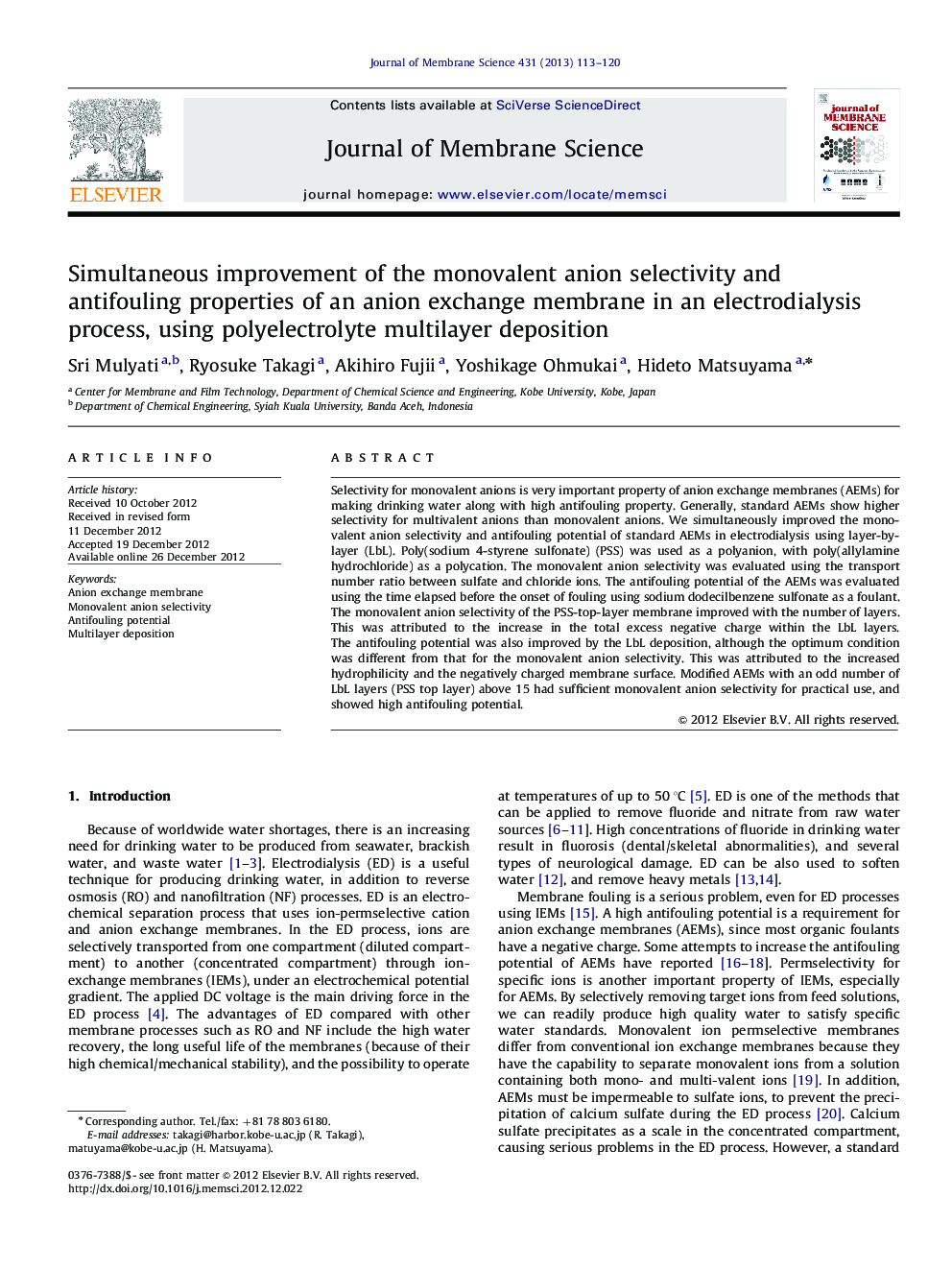| Article ID | Journal | Published Year | Pages | File Type |
|---|---|---|---|---|
| 634382 | Journal of Membrane Science | 2013 | 8 Pages |
Selectivity for monovalent anions is very important property of anion exchange membranes (AEMs) for making drinking water along with high antifouling property. Generally, standard AEMs show higher selectivity for multivalent anions than monovalent anions. We simultaneously improved the monovalent anion selectivity and antifouling potential of standard AEMs in electrodialysis using layer-by-layer (LbL). Poly(sodium 4-styrene sulfonate) (PSS) was used as a polyanion, with poly(allylamine hydrochloride) as a polycation. The monovalent anion selectivity was evaluated using the transport number ratio between sulfate and chloride ions. The antifouling potential of the AEMs was evaluated using the time elapsed before the onset of fouling using sodium dodecilbenzene sulfonate as a foulant. The monovalent anion selectivity of the PSS-top-layer membrane improved with the number of layers. This was attributed to the increase in the total excess negative charge within the LbL layers. The antifouling potential was also improved by the LbL deposition, although the optimum condition was different from that for the monovalent anion selectivity. This was attributed to the increased hydrophilicity and the negatively charged membrane surface. Modified AEMs with an odd number of LbL layers (PSS top layer) above 15 had sufficient monovalent anion selectivity for practical use, and showed high antifouling potential.
► Anion exchange membrane surface was modified using LbL deposition with PSS and PAH. ► Monovalent anion selectivity and antifouling potential were improved simultaneously. ► Dominant factor to improve the ion selectivity was the areal excess negative charge. ► Dominant factor to improve the antifouling potential was the hydrophilicity.
